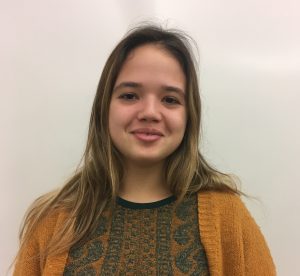Access to a Printer Friendly PDF of this newsletter.
Communicating to reduce waste of fresh produce
Researcher Michael Blanke, University of Bonn, developed a concept paper summarizing key “hot spots” for waste generation in Europe along the food supply chain. He cited examples of communications countermeasures such as these to reduce food waste in private households, the major origin of it in Western Europe:
- Superstores discontinue promoting multi-packs of fresh produce
- Abandon the “Display until” or “Sell by” date
- Engage volunteers in collecting and arranging use of extra perishable food
- Use social media to “food share” extra perishables in private households
You can read the article, “Challenges of Reducing Fresh Produce Waste in Europe—From Farm to Fork” at MDPI.
Uses of smartphones and social media in 11 emerging economies
Findings of a 2019 survey by the Pew Research Center indicated that text messaging was the most popular social activity among these mobile phone users. A median of 82 percent across all 11 countries said they used their phones to send text messages within the past year. Sizable shares also reported taking photographs or videos. A median of about 60 percent used their mobile phones to search for information about health and medicine. About the same share (59 percent) said they used their phones to learn something important for work or school.
You can read the research summary for the Pew Research Center.
“People have been faking it for years”
In this seemingly post-truth era, you may find a touch of perspective in a brief article of that title we came across recently in a 2013 issue of Science magazine. Author Yael Fitzpatrick introduced an exhibition, “Faking it: Manipulated Photography before Photoshop,” at the Metropolitan Museum of Art. The exhibition explored manipulation of non-digital photography from the 1840s through the early 1990s.
It did not mention manipulations of early agricultural photography. Are you aware of potential examples (early or recent) we might add to ACDC? If so, we welcome them at acdc@library.illinois.edu.
You may be aware that AAEA – The Agricultural Communicators Network – has an “AAEA Photographers’ Code of Ethics” which addresses manipulation of photos and videos.
Butter cows: a unique sculptural medium
Pamela Simpson, professor of history at Washington and Lee University, sketched the history of sculptured butter cows in a 2019 issue of Sculpture Review. She explained that butter sculpture has roots in ancient food molds and table art for Renaissance banquets. In the United States, it debuted during the late 1800s and first quarter of the 1900s. It appeared at fairs and expositions.
“Both amateur and professional sculptors used this unusual medium for busts and portraits, dairy-related subjects, and models of buildings. The ephemeral nature of the medium and the novelty of food as art drew crowds to exhibits advertising butter as the natural, healthy alternative to oleomargarine.”
From experience, we know that “Where’s the butter cow?” remains a common question today from visitors attending state fairs that feature sculptured butter cows.
You can read the journal article “Butter Cows and Butter Buildings: A History of an Unconventional Sculpture Medium” with the provided pdf.
Remembering “a passionate and influential advocate for smallholder farmers around the world”
 We in ACDC join many others in remembering a long-time colleague, Burton Swanson, who passed away recently. During his career in international rural development here at the University of Illinois, he served in more than 40 countries throughout the world. He co-founded and later directed the International Program for Agricultural Knowledge Systems (INTERPAKS). This unique multi-disciplinary program provided research and professional development in support of extension and rural development. It placed special emphasis on improving extension and advisory systems – and livelihoods of the rural poor.
We in ACDC join many others in remembering a long-time colleague, Burton Swanson, who passed away recently. During his career in international rural development here at the University of Illinois, he served in more than 40 countries throughout the world. He co-founded and later directed the International Program for Agricultural Knowledge Systems (INTERPAKS). This unique multi-disciplinary program provided research and professional development in support of extension and rural development. It placed special emphasis on improving extension and advisory systems – and livelihoods of the rural poor.
Several years ago Professor Swanson contributed valuable INTERPAKS resources to the ACDC collection. They include more than 900 documents he authored or gathered as references for his academic career. One of several books he authored was translated into seven languages. His many honors included the Lifetime Achievement Award from the International Society for Agricultural Extension.
You can read a memorial to him, “Remembering Burt Swanson,” at ACES News.
Congratulations and thanks to Kimberly Villanueva
 During May, Kimberly completed her undergraduate studies in the journalism stream of agricultural communications here at the University of Illinois. She also completed more than a year of valuable service as student assistant in ACDC. We extend our hearty congratulations, sincere thanks, and best wishes.
During May, Kimberly completed her undergraduate studies in the journalism stream of agricultural communications here at the University of Illinois. She also completed more than a year of valuable service as student assistant in ACDC. We extend our hearty congratulations, sincere thanks, and best wishes.
As a member of the ACDC team, Kimberly contributed a sharp eye in identifying literature about agricultural journalism and communications. As well, she effectively helped review and process it to serve users during the years ahead.
Communicator events approaching
Uncertainties of the COVID-19 health issue continue to prompt flexible event planning, as you know. Here are plans of which we are aware, with website addresses you can use to track updates.
August 11-13, 2020 (on-site conference rescheduled from April 15-17 with virtual option.)
“Charting the course.” Conference of the National Agri-Marketing Association (NAMA) in Kansas City, Missouri.
Information: https://www.nama.org/agri-marketing-conference.html
September 14-16, 2020 (virtual conference rescheduled from on-site in June)
“Spice up your creativity.” Annual CCA Institute of the Cooperative Communicators Association in Buffalo, New York.
Information: https://www.communicators.coop
November 14-18, 2020 (on-site conference rescheduled from July 25-29)
“Ag Media Summit 2020.” AMS is an industry-wide gathering of agricultural media and communications professionals in Kansas City, Missouri. It joins together AAEA–The Agricultural Communicators Network, Livestock Publications Council, and Ag Media Council of Connectiv
Information: https://agmediasummit.com
Farmers worrying about bad public relations (a half century ago)
We close this issue of ACDC News with a thought from Paul C. Johnson, long-time editor of Prairie Farmer. He was speaking in 1970 at a seminar on communicating agriculture to the non-agricultural public.
“I do not agree with the often-stated opinion that farmers have bad public relations. I think we spend too much time worrying about whether people think we are good guys or bad guys. … We have proved that we can produce food successfully. We have proved that we could be good citizens in the rural community that was. We have yet to prove that we can successfully contribute to the rural community that is to be. If we prove to our neighbors, both urban and country non-farm, that we can throw our influence and our skills into organization on the side of solving the social problems of our time, we won’t need to worry about our public relations.
Best regards and wishes during this challenging time
ACDC is a resource for you, so please feel free to invite our help as you search for information. Don’t forget to follow us on Twitter @ACDCUIUC. And please suggest (or send) agricultural communications documents we might add to this unique and valuable international collection. We welcome them in hard copy (sent to Ag Comm Documentation Center, Room 510, 1101 S. Goodwin Avenue, Urbana, IL 61801) – or in electronic format sent to acdc@library.illinois.edu